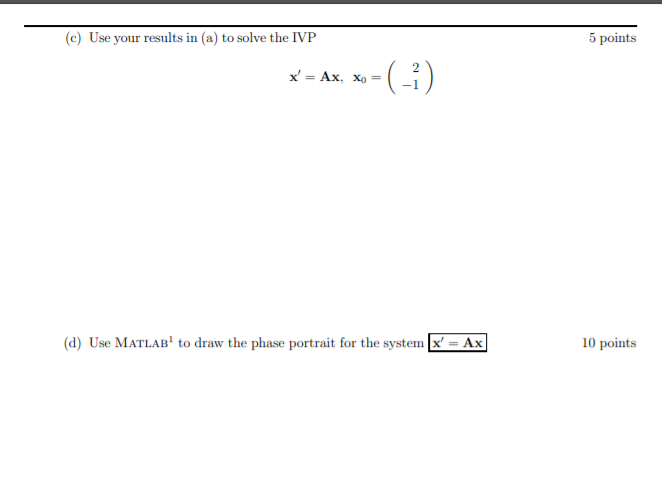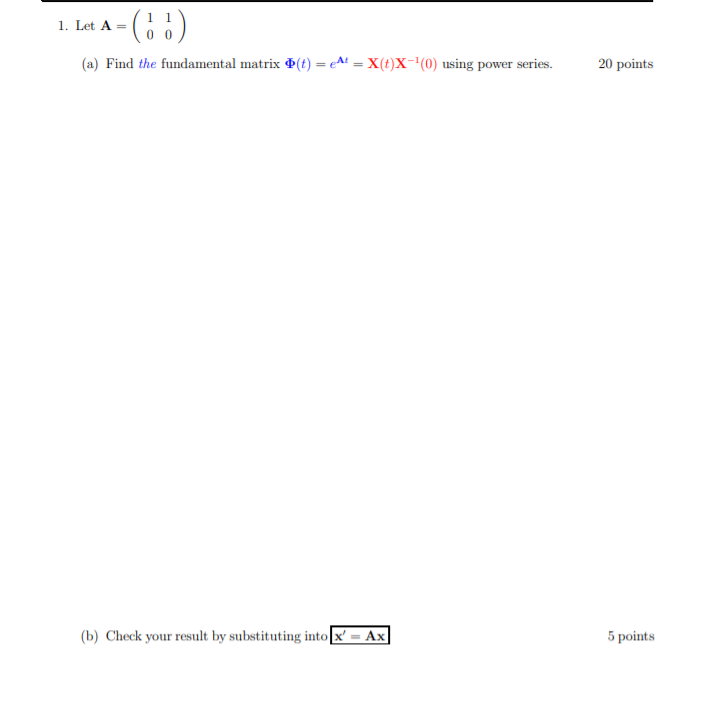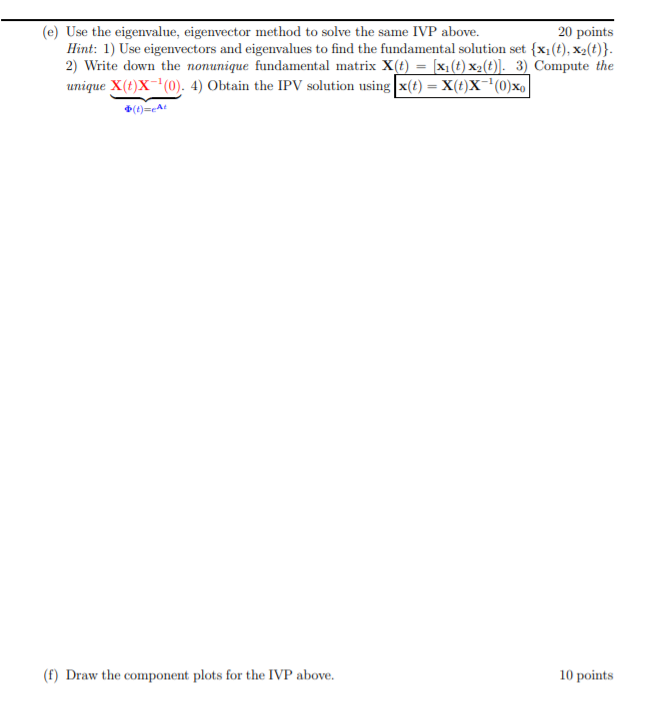Answered step by step
Verified Expert Solution
Question
1 Approved Answer
You will earn LIKE + UPVOTE, if complete entire question! THANK YOU (c) Use your results in (a) to solve the IVP 5 points x'
 You will earn LIKE + UPVOTE, if complete entire question! THANK YOU
You will earn LIKE + UPVOTE, if complete entire question! THANK YOU


(c) Use your results in (a) to solve the IVP 5 points x' = Ax, Xo = 6=(-1) (a) Use MATLAB to draw the phase portrait for the system x' = Ax 10 points 1. Let A = (a) Find the fundamental matrix o(t) = M1 = X(t)X- 0) using power series. 20 points (b) Check your result by substituting into x' = Ax 5 points (e) Use the eigenvalue, eigenvector method to solve the same IVP above. 20 points Hint: 1) Use eigenvectors and eigenvalues to find the fundamental solution set {xi(t), xz(t)} 2) Write down the nonunique fundamental matrix X(t) = x1(t) xz(t)). 3) Compute the unique X(t)X-0). 4) Obtain the IPV solution using X(t) = X(t)x0)x (t)=A (f) Draw the component plots for the IVP above. 10 points (c) Use your results in (a) to solve the IVP 5 points x' = Ax, Xo = 6=(-1) (a) Use MATLAB to draw the phase portrait for the system x' = Ax 10 points 1. Let A = (a) Find the fundamental matrix o(t) = M1 = X(t)X- 0) using power series. 20 points (b) Check your result by substituting into x' = Ax 5 points (e) Use the eigenvalue, eigenvector method to solve the same IVP above. 20 points Hint: 1) Use eigenvectors and eigenvalues to find the fundamental solution set {xi(t), xz(t)} 2) Write down the nonunique fundamental matrix X(t) = x1(t) xz(t)). 3) Compute the unique X(t)X-0). 4) Obtain the IPV solution using X(t) = X(t)x0)x (t)=A (f) Draw the component plots for the IVP above. 10 points
Step by Step Solution
There are 3 Steps involved in it
Step: 1

Get Instant Access to Expert-Tailored Solutions
See step-by-step solutions with expert insights and AI powered tools for academic success
Step: 2

Step: 3

Ace Your Homework with AI
Get the answers you need in no time with our AI-driven, step-by-step assistance
Get Started


